Flower arranging and other Montessori practical life activities help children develop independence and logical thought and prepare the way for reading and writing.
Invite children to try this flower arranging Montessori practical life activity at home or in the classroom. Practical life activities, like arranging flowers, can help create positive lifelong habits when practiced regularly over time. In Waldorf education, practical life activities are called home life skills and occur within the rhythm of daily life in the home and classroom. You might also enjoy this coin-sorting Montessori-Inspired Sensorial Activity.
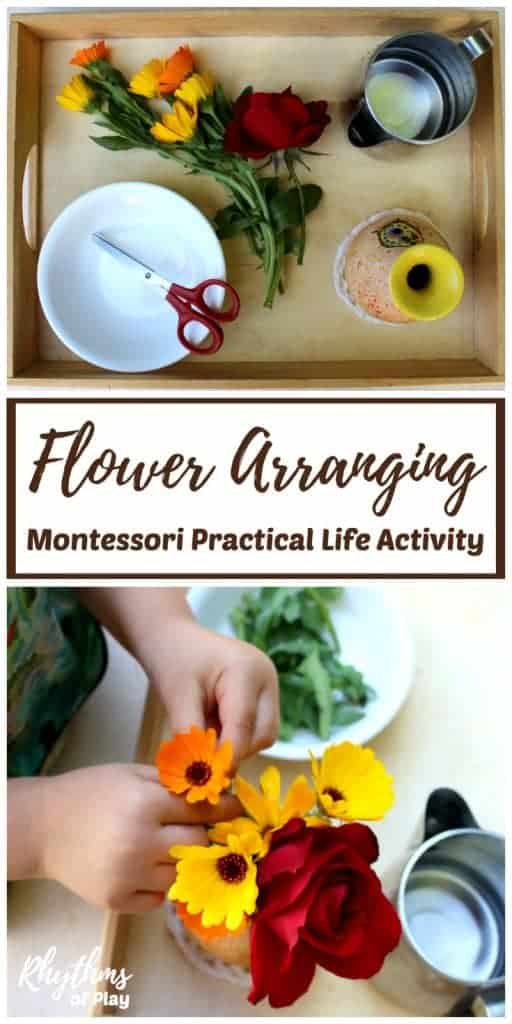
Related: 15 Ways to Raise a Helper
How to Teach Children to Arrange Flowers
Maria Montessori developed practical life activities to help children grow into independent-thinking adults. And, each step in a practical life activity satisfies the child’s innate desire to imitate the home life skills that children see performed around them daily.
Other practical life activities include pouring, transferring materials, cutting a banana, squeezing an orange, folding washcloths, etc.
This flower arranging activity includes a number of home life activities strung together in a single action, so it is best for kindergarteners, preschoolers, and older toddlers who have had some experience with skills such as carrying a tray, pouring, and using scissors for cutting. So, make sure that children practice those skills independently before inviting them to try arranging flowers.
Related: Books That Teach Kids Important Life Lessons
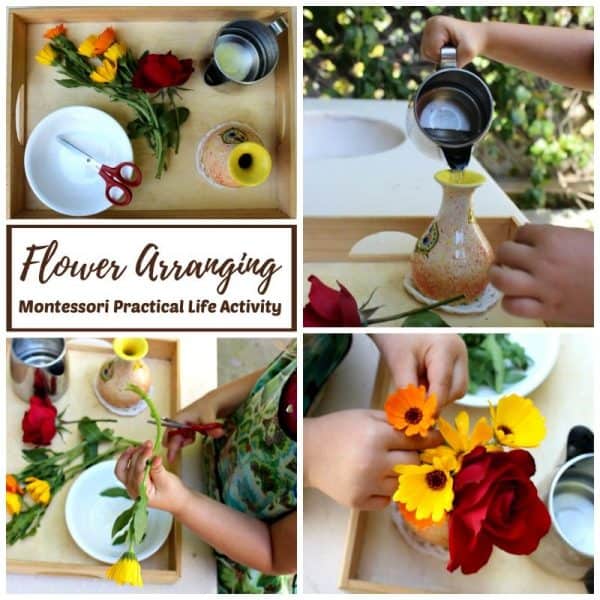
Flower Arranging Montessori Practical Life Activity Materials
- Flowers
- Tray and/or activity mat
- Scissors
- Child-size small glass or metal pitcher
- Small bowl for flower-cutting discards
- Small vase, or try these colorful vases, or these floral jars
- Doilies
- Children’s apron
Related: Real Flower Nature Crafts for Kids and Teens
How to Set Up Flower Arranging Montessori Practical Life Activity
- Pick or purchase flowers to arrange. Or, make no-sew felt flowers and invite toddlers to practice with them during the colder months of the year in winter.
- Place doilies
, flowers, a discard bowl, scissors, a pitcher of water, and a vase on a wooden tray
or a Montessori activity mat
, as shown in the photograph below.
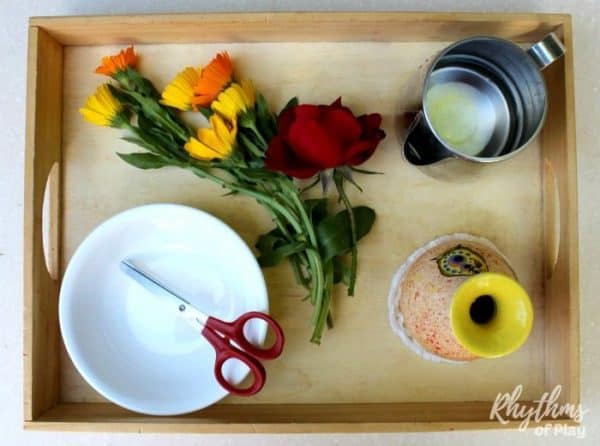
Related: Rainbow Rainy Day Art Kids STEAM project
Demonstrate How to Arrange Flowers
If this is the first time your child has ever tried flower arranging, demonstrate how to arrange flowers before asking your children or students to try it. Young children learn best by watching and imitating others. Show your child how to arrange flowers by completing the activity while briefly describing what you’re doing as you work.
Remember, children don’t remember how you meant to do it or how you wanted to do it. They only remember what they saw. Once finished with your demonstration, invite children to arrange flowers and complete the activity following the step-by-step Montessori flower arranging directions below. Or try squeezing an orange for another excellent Montessori Practical Life Activity.
Demonstrate Flower Arranging Activity from Left to Right
Montessori recommends that all practical life activities proceed from left to right and top to bottom to mirror and reinforce the actions of reading. She theorized that introducing practical life activities in this way will make it easier for the child to learn how to read.
This is why Montessori recommended that teachers help create the habit of going from left to right and top to bottom with simple, practical life activities like flower arranging. She believed that creating these strong habits would pave the way toward literacy by preparing the child for reading and writing. And that this would produce competent and successful students. You might also enjoy this beaded necklace literacy activity for kids.
How to Arrange Flowers: Montessori Flower Arranging Practical Life Activity for Kids
1. Put an apron on.
- Maria Montessori developed an “activity cycle” to help build the positive habits children need to become successful students and, later, successful adults. Putting an apron on starts the “activity cycle” so the child knows it is time to work.
- In other words, putting an apron on, or placing an activity mat down, is the cue to the child that it is time to complete an activity. Soon, the whole child (brain, body, and spirit) will respond to this cue and be prepared for the job.
Related: How the Power of Habit Can Change Your Life
2. Present the materials.
- Place the flower arranging tray or activity mat in front of your child.
3. Pour water into a vase.
- As shown in the photograph below, use a glass
or metal
child-sized pitcher to pour water into a small vase
.
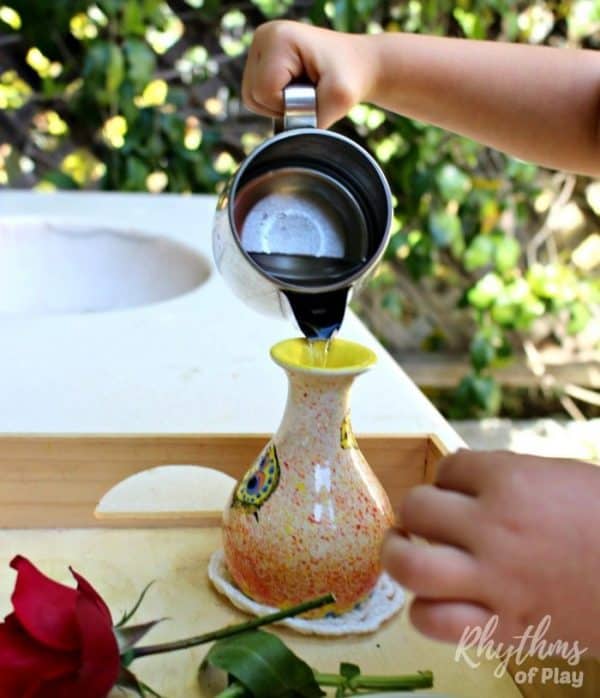
4. Trim each flower before placing it into the vase.
- Stand the flower next to the vase
to determine the amount that needs to be trimmed.
- Use scissors to trim each flower to the desired length, and place the trimmings in a discard bowl
.
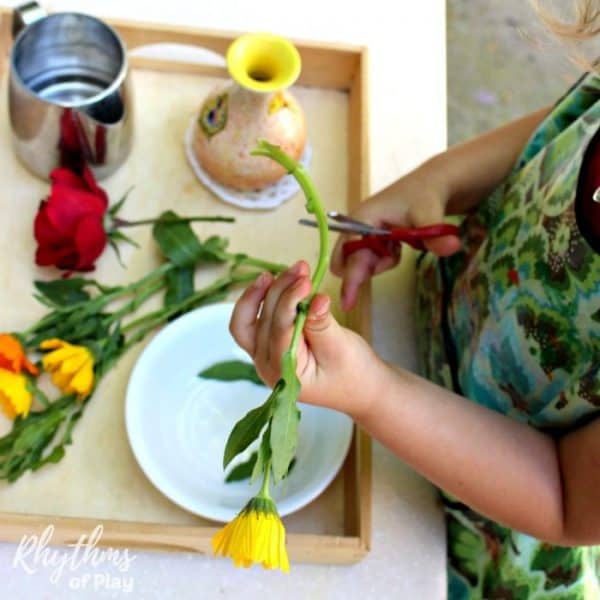
5. Place Each flower in The vase.
- Encourage the child to trim and place each flower into a small vase.
- Put the flower remains in the discard bowl until the flower arranging activity is complete.
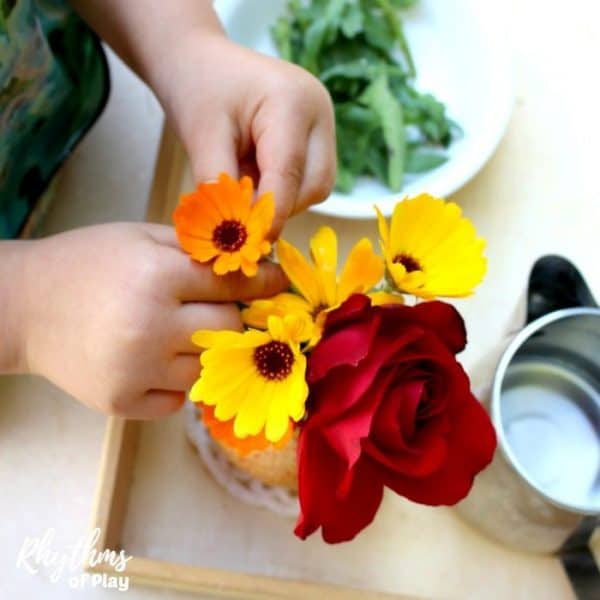
Related: How to Start a Fairy Garden
How to Finish Flower Arranging Montessori Practical Life Activity
Follow the simple steps below to complete this flower-arranging activity:
- Invite your child to place their flower arrangement somewhere in the home. This will help build strong habits and help your child feel like a valued contributor to the household.
- Clean up and put everything away. In our house, that means dumping the flower trimmings in the compost bin and putting the tray with the pitcher on the kitchen counter. Determine a set of actions that complete the activity for the children in your home or classroom, and show each child what to do before offering them to try it on their own.
- Have your child take their apron off and hang it up to signal the end of the “activity cycle.”
Once your child has completed their flower arrangement and placed it somewhere in the house, do your best to abstain from moving it. Admire it as is!
Below is a photo of a flower arrangement my daughter placed on our dining room table after completing this activity. I wanted to turn her beautiful arrangement around to face the room, but that would have disturbed her work and put less value on it. So, I left it as is–the ducks are my favorite! You gotta love kids, right? Encourage your children to be creative and have fun. And you might have fresh flowers on your table when you least expect it.
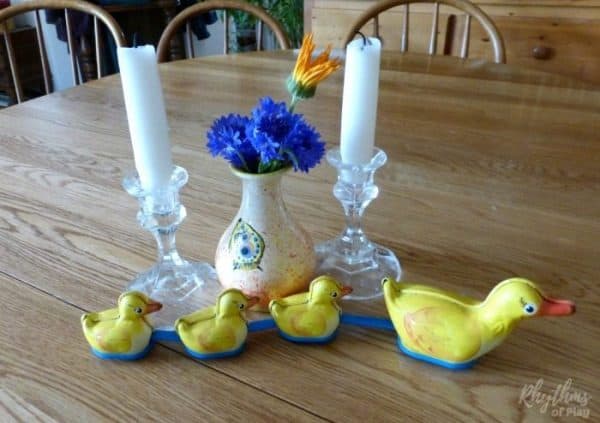
Flower Arranging Practical Life Activity for Kids
Montessori practical life activities are designed to help children develop logical thought and independence. This flower-arranging activity contains several home-life skills for preschoolers, kindergarteners, and young elementary-aged students to learn and master, including pouring, measuring, cutting, placing, and carrying!
Maria Montessori developed practical life activities to help children develop into independently thinking adults. And each step in her practical life activities, such as this flower arranging activity for kids, satisfies the child’s innate desire to imitate the home life skills that children see adults perform around them daily. Encourage your children to give it a try today!
Learn more about Rhythms of Play HERE!
Montessori Practical Life and Sensorial Activities
- Coin Sorting Montessori-Inspired Sensorial Activity
- Cutting a Banana: A Montessori Practical Life Activity
- Squeezing an Orange Practical Life Activity

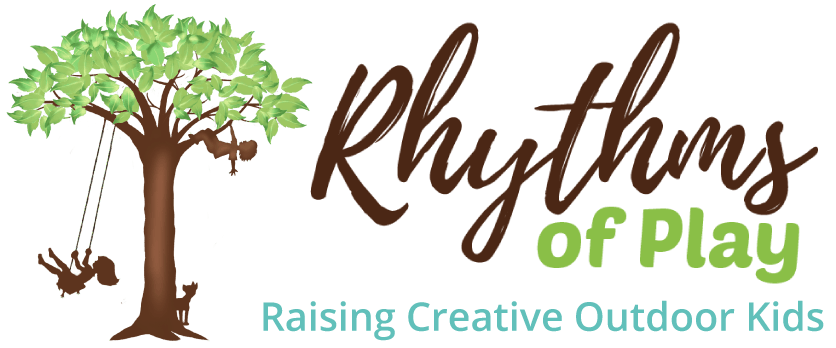


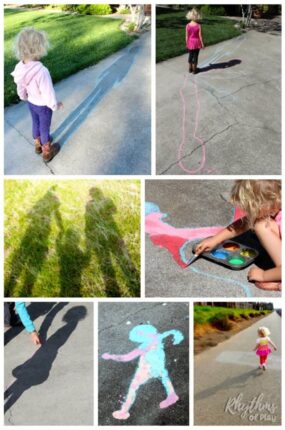

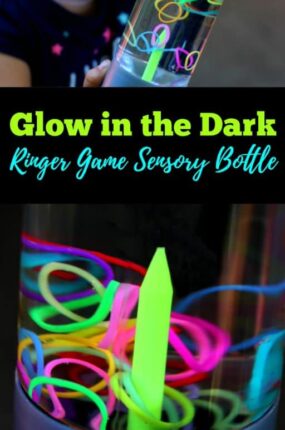
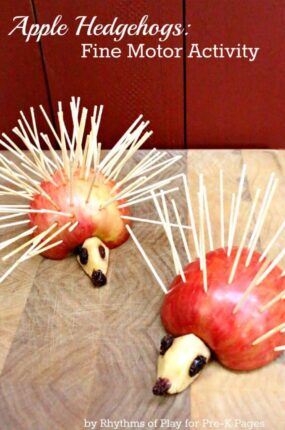
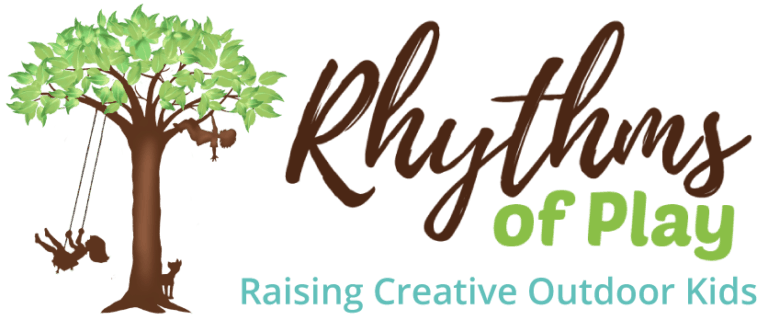
You should be cutting the stems in a bowl of water so your pitcher fills the vase and the white bowl. Florists actually do this so as soon as the flower is cut (immediately) the water goes up the stem.
For professional florists this is true, however, this Montessori flower arranging activity does not require it. You are correct that it will help the flowers last longer by keeping the bubble of air from going up the stem, but it is a bit too much to ask of children that are only just learning to use scissors and arrange flowers. I would introduce that idea after the child has become competent with scissors and flowers, but not before.